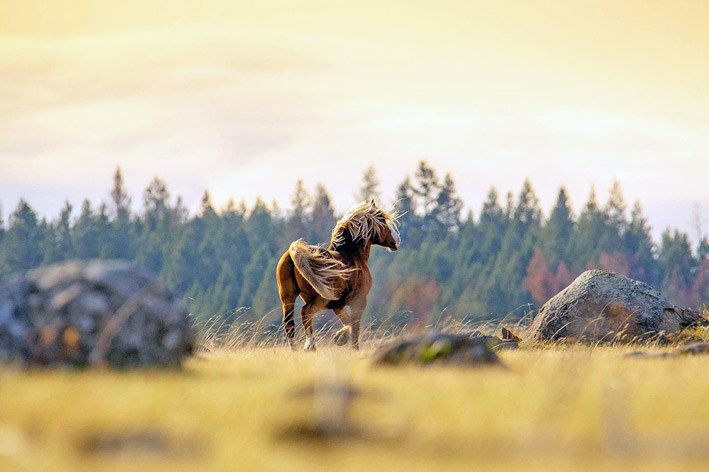A B.C. First Nation will be developing an equine program in the heart of the Chilcotin.
The equine therapy program by Tl’etinqox First Nation west of Williams Lake will offer life skills, mentorship, Indigenous teachings and qualified professional support necessary to address the roots of trauma through the power of healing with land and horses.
“With a goal to building on previous and current equine initiatives, the development of property purchased at Alexis Lake and respecting the effects of experiences related to the 2017 wildfires, the need for local, traditionally-led programming for the community and Tsilhqot’in Nation will be become a reality,” said capital project manager Dawn Bursey.
The project has been envisioned for many years by Chief Joe Alphonse who is also tribal chair of the Tsilhqot’in National Government.
“As original inhabitants of this vast and beautiful territory encompassing high mountain plateaus, forests, grasslands, lakes and desert, the Tsilhqot’in people have been self-reliant and well provided for through their own ingenuity and relationship with the land and with nature,” Bursey said.
“This project aims to both reflect and expand on these strengths.”
With the recent approval and funding of more than $1.9. million by the Government of Canada and $636,000 from the province of B.C., the property located approximately 30 kilometres northwest of Alexis Creek will see the renovation of existing log cabins, construction of equine facilities and development of approximately 10 traditional living spaces.
The building of a health centre housing such a program began in the fall of 2018 when the Tl’etinqox Government launched community engagement, feasibility studies, proposal writing and clean-up at the Alexis Lake site.
Bursey said from the fall of 2018 through early this year, community members of all ages had also been involved in the formative stages of the project through capacity building workshops as well as community wellness and cultural programming such as youth after school riding, family wellness, gymkhanas and cultural rides.
Serving as a consultant on the project, licensed psychotherapist Duey Freeman described that ‘horses offer openness and availability for authentic contact, responsiveness, and right relationship.’
“Horses are embodied and energetically connected,” he noted. “They encourage congruence of body and mind, trust and communication.”
Construction is anticipated to be completed by early fall 2021.
The community currently has seven horses as part of the program and will expand the herd over time and as the project completion nears Bursey said, adding the initial proposal included an inventory of between 10 and 15 horses.
“Tl’etinqox community member Wesley Alphonse is the program horse handler and will continue to acquire, develop and train horses over the next eighteen months.”
Once operational, the land based equine therapy program will focus on youth and families, and will start with all Tsilhqot’in Nation members.
It will expand as demand and facility participant constraints allow.
“It is important that the project develops at the right pace under the direction of the community, and with constant mindfulness of the ultimate vision,” said Bursey.
“This means having no qualms about starting small, listening deeply, making the right adjustments and taking adequate time and care to create a quality program with relevant curriculum.”



